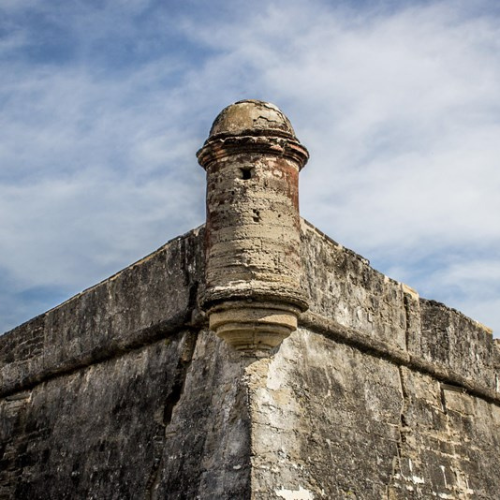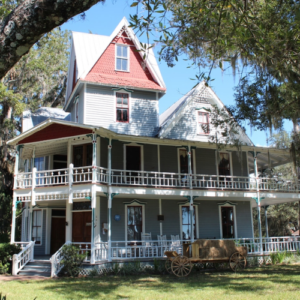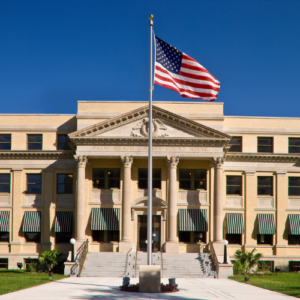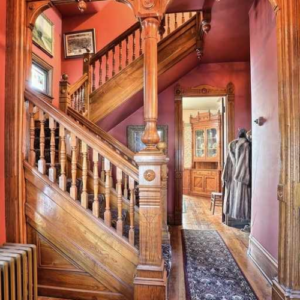
23 Jul Caring for Historic Structures
Historic Building Preservation
Historical buildings are an integral part of South Florida’s rich cultural heritage. These structures, often boasting unique architectural features and historical significance, require special care and attention to preserve their integrity. One crucial aspect of maintaining these buildings is effective pest control. Without proper pest management, these cherished landmarks can suffer significant damage, losing their historical value and aesthetic appeal. In this article, we will explore the importance of pest control in historical buildings, providing detailed insights for South Florida residents, homeowners, and business owners.
Historical buildings face unique challenges when it comes to pest control. These structures often have old wood, plaster, and other materials that attract pests. The construction techniques used in historical buildings may also create hidden spaces where pests can thrive. Common pests that infest historical buildings include termites, rodents, cockroaches, and wood-boring insects. These pests can cause extensive damage if not controlled promptly.
Termites, for instance, are a significant threat to historical buildings. They feed on wood and can weaken the structural integrity of a building over time. Rodents, on the other hand, can gnaw through wires and insulation, creating fire hazards and compromising the building’s safety. Cockroaches and other insects not only damage the structure but also pose health risks to occupants. Addressing these pest issues requires specialized knowledge and techniques tailored to the unique vulnerabilities of historical buildings.
Preserving Historical Integrity
Pests can cause severe structural damage to historical buildings. Termites, for example, can silently destroy wooden beams and supports, leading to significant structural problems. Wood-boring insects such as beetles and carpenter ants can also compromise the integrity of wooden elements. These pests create tunnels and galleries within the wood, weakening it from the inside out. Over time, this damage can lead to costly repairs and, in extreme cases, the loss of irreplaceable historical features.
In addition to structural damage, pests can also pose health risks. Rodents carry diseases and can contaminate food supplies and living spaces with their droppings and urine. Cockroaches are known to spread pathogens and allergens, which can cause respiratory problems and allergic reactions. In historical buildings, where preservation of both the structure and the health of occupants is paramount, effective pest control is essential to prevent these risks.
Safe Pest Solutions for History
Implementing an Integrated Pest Management (IPM) approach is one of the best practices for controlling pests in historical buildings. IPM focuses on long-term prevention and control through a combination of techniques. These include regular inspections, monitoring, sanitation, and the use of non-toxic methods. By employing IPM, property owners can reduce the reliance on chemical treatments, which can be harmful to both the building and the environment.
Regular inspections and monitoring are critical components of IPM. By identifying potential pest problems early, property owners can address issues before they become severe. Sanitation is also essential in preventing pest infestations. Keeping the building clean and free of food debris and standing water can deter pests from settling in. Additionally, using physical barriers such as screens and caulking can help seal entry points and prevent pests from entering the building.
When it comes to pest control in historical buildings, non-invasive and non-toxic methods are preferred. These methods help preserve the building’s integrity while effectively managing pest populations. For example, using live traps for rodents allows for humane removal without damaging the structure. Essential oils like peppermint and eucalyptus can repel insects without harming them or the environment. Organic insecticides, such as those made from neem oil or diatomaceous earth, provide effective control while being safe for humans and pets.
Documentation and adherence to historical preservation guidelines are also crucial. Property owners should keep detailed records of pest control measures taken and their outcomes. This documentation can help inform future efforts and ensure compliance with preservation standards. By using these best practices, property owners can protect their historical buildings from pests while preserving their historical value.
Conserving History from Pests
Termites are among the most destructive pests for historical buildings. To control termites, property owners can use a variety of techniques tailored to the building’s needs. Baiting systems are an effective method, where termites are attracted to bait stations containing slow-acting insecticides. This method targets the colony as a whole, reducing the termite population over time. Physical barriers, such as stainless steel mesh or sand, can also be installed around the building’s foundation to prevent termites from entering.
For severe infestations, localized treatments like heat or microwave treatments can be used. These methods target termites in specific areas without the need for widespread chemical application. Regular inspections and monitoring are crucial to detect termite activity early and implement control measures promptly.
Rodents pose significant risks to historical buildings due to their gnawing behavior and disease-carrying potential. Humane rodent control focuses on live trapping and exclusion. Live traps allow for the capture and relocation of rodents without killing them. Once captured, it’s important to release them far from the property to prevent their return. Habitat modification is also essential to make the building less attractive to rodents.
Securing trash cans, keeping food in sealed containers, and regularly cleaning up debris can help deter rodents. Sealing entry points, such as gaps around doors and windows, is critical to prevent rodents from entering the building. By combining these methods, property owners can manage rodent populations effectively while preserving the integrity of the historical building.
Protecting Historic Woodwork
Insects like ants, cockroaches, and bed bugs can be persistent and challenging to control. Non-toxic sprays and baits are effective tools in humane insect control. Boric acid baits, for example, can effectively manage cockroach populations without posing significant risks to humans and pets. Similarly, using a mixture of sugar and baking soda can attract and kill ants naturally.
Introducing beneficial insects is another effective strategy. Predatory beetles can help control bed bug populations, while parasitic wasps can target pest larvae. These biological controls provide a natural and humane way to manage insect infestations without relying on harsh chemicals. By using these safe insect control measures, property owners can protect their historical buildings from damage and health risks.
Wooden structures and artifacts are particularly vulnerable to pest damage in historical buildings. To protect these elements, property owners can use a combination of preventive and control measures. Applying borate treatments to wooden surfaces can help prevent termite and wood-boring insect infestations. Borates are safe and effective, penetrating the wood and providing long-lasting protection.
Regular maintenance and inspections are also essential. Checking for signs of pest activity, such as frass (insect droppings) or damaged wood, can help detect problems early. Installing physical barriers, such as metal mesh, can prevent pests from accessing wooden structures. By taking these proactive steps, property owners can preserve the integrity of wooden elements in historical buildings.
Care for Historic Sites
Professional pest control services play a vital role in implementing humane pest control practices for historical buildings. Pest Busterzz, a family-owned organic pest control company, is committed to providing safe and effective solutions. Our professional team has the expertise to assess your pest problems accurately and develop customized plans that align with humane principles.
Professional services also ensure ongoing monitoring and maintenance, which are essential for long-term pest control. Regular inspections help identify potential issues early, allowing for timely intervention. Additionally, professional pest control companies have access to advanced tools and products that are both effective and environmentally friendly. By working with certified pest control professionals, property owners can ensure their historical buildings receive the best care possible.
Preventive measures are crucial in maintaining pest-free historical buildings. Regular maintenance and inspections are key to preventing pest infestations. Keeping the building clean and free of food debris and standing water can deter pests. Sealing cracks and gaps in walls, doors, and windows prevents rodents and insects from entering the building.
Additionally, property owners should consider implementing Integrated Pest Management (IPM) practices. IPM focuses on long-term prevention and control through a combination of techniques, including regular inspections, monitoring, sanitation, and the use of non-toxic methods. By employing IPM, property owners can reduce the reliance on chemical treatments and protect their historical buildings more effectively.
Conclusion
Preserving historical buildings is a responsibility that requires careful attention to detail, especially when it comes to pest control. Humane pest control methods offer a solution that balances effective pest management with ethical considerations. By prioritizing non-toxic methods, focusing on prevention, and using environmentally friendly techniques, property owners can protect their historical buildings from damage while preserving their historical value.
Pest Busterzz is dedicated to providing top-notch humane pest control services to South Florida residents, homeowners, and business owners. Our family-owned and operated company takes pride in offering personalized care and exceptional customer service. For professional, humane pest control solutions, trust Pest Busterzz. Contact us today to learn more about our services and how we can help you achieve a pest-free environment in the most ethical and effective way possible. Together, we can make a positive impact on our homes, businesses, and the environment.







No Comments